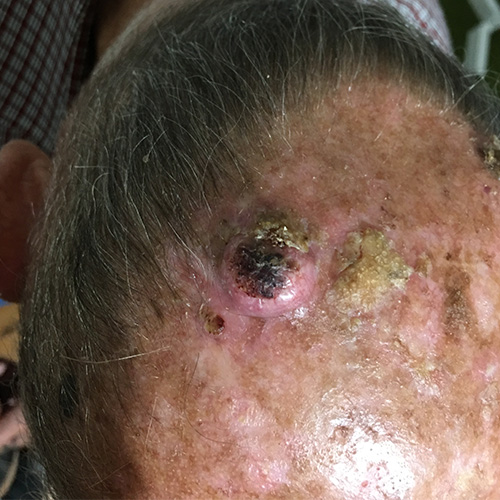Presentation and diagnosis
Invasive squamous cell carcinomas (SCCs) are the second most common skin cancer in Australia. They are tender squamoproliferative indurated lesions that can appear suddenly and grow rapidly, or grow slowly over weeks to months. Very early lesions can be mistaken as solitary lesions of folliculitis or other inflammatory lesions. Invasive squamous cell carcinomas mainly occur on heavily sun-exposed skin (ie head, neck, backs of hands, limbs, upper trunk). For a photo of invasive SCC, see here.
A biopsy is recommended to establish the diagnosis of an invasive SCC.
Up to 5% of primary invasive SCCs on sun-exposed skin metastasise; the risk of metastasis is greater for SCCs arising from the scalp, ear or lip, compared to SCCs arising from other areas. SCCs arising in chronic wounds or scars, or non–sun damaged skin have a poorer prognosis. Patients with immunosuppression, including patients with chronic lymphocytic leukaemia, have an increased risk of primary SCCs and metastasis—refer for specialist multidisciplinary management. Chemoprophylaxis with acitretin may be appropriate.

Photo sourced with permission from Dr Michelle McRae.
